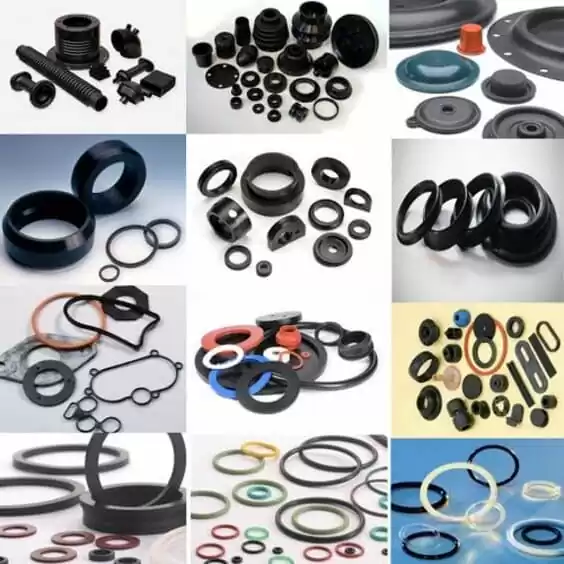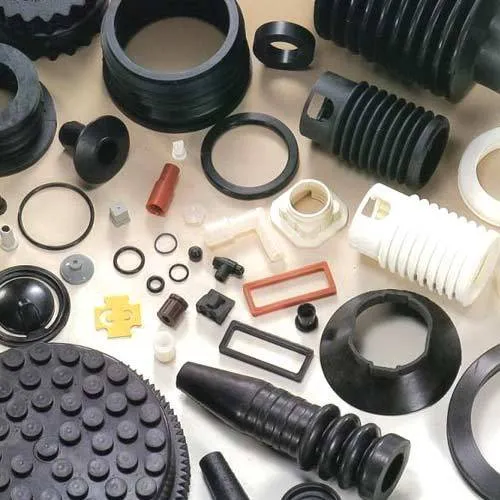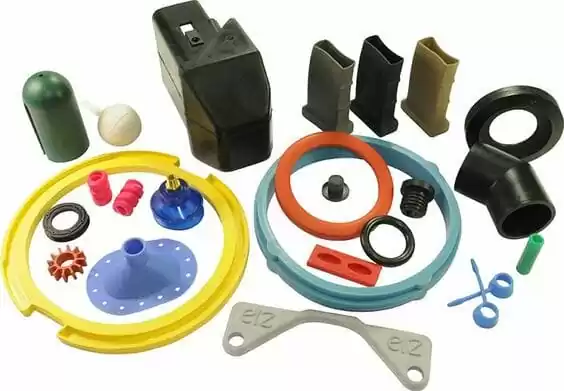Rubber is divided into two types: natural rubber and synthetic rubber. Natural rubber is made by extracting gum from rubber trees, rubber grass, and other plants, while synthetic rubber is made by polymerization of various monomers. Silicone rubber products are widely used in industry or various aspects of life.
By form, they are divided into raw rubber blocks, latex, liquid rubber, and powder rubber. Latex is a colloidal water dispersion of rubber; liquid rubber is an oligomer of rubber and is generally a viscous liquid before vulcanization; powder rubber is processed into powder form to facilitate batching and processing.
In general, rubber performance testing can be done by ISO, ASTM, DIN, GB, HB, and other standards to test the physical and chemical properties and mechanical properties of raw rubber, vulcanized rubber, rubber products, and rubber additives.

A. Performance index items
Physical and mechanical properties: density, hardness, surface resistivity, dielectric properties, tensile properties, impact properties, tearing properties, compression properties, adhesive strength wear resistance, low-temperature properties, and resilience properties.
Aging performance: thermal aging, ozone aging, UV lamp aging, salt spray aging, xenon lamp aging, carbon arc lamp aging, and halogen lamp aging.
Liquid fluid resistance: lubricating oil, gasoline, motor oil, acid, alkali, organic solvent, water resistance. Combustion performance: vertical combustion, alcohol torch combustion, alleyway propane combustion, smoke density, combustion rate, effective burning calorific value, total smoke release.
Applicable performance: hydraulic pressure resistance, pulse test methods, electrical conductivity, water tightness, and air tightness.
Related application products: tires, fenders, shoe soles, water stops, seals, conveyor belts, rubber hoses, cables and wires, automotive interiors, construction rubber materials, fast consumer goods rollers, rubber sheets, medical and health rubber products, rubber pressure-reducing products, rubber shock-absorbing products, etc.

B. Common rubber testing items
1. Rubber species assessment: volatile content, ash, tensile strength, fixed tensile strength.
2. Production parameters: Menny viscosity, thermal stability, shear stability, vulcanization curve, and Menny scorch time.
Related application products: natural rubber product, silicone rubber, styrene-butadiene rubber, nitrile rubber, ethylene propylene rubber, polyurethane rubber, butyl rubber, fluorine rubber, cis-butyl rubber, neoprene rubber, isopentyl rubber, polysulfide rubber, chlorosulfonated polyethylene rubber, polyacrylate rubber, other rubber.
3. Rubber performance requirements: rubber performance can be divided into two categories, structural properties, and functional properties, structural properties refer to high elasticity and strength and other mechanical properties;
Functional properties refer to the physical and chemical properties of rubber, such as dielectric resistance, electrical insulation, chemical resistance, etc.

Silicone rubber products, most of them mainly use the former type of performance, such as shock absorbing products, sealing products, etc.; some use the latter type of performance mainly, such as water seal (water resistance) and cable sheath (electrical insulation), etc.
But in all physical properties, structural properties both mechanical and mechanical properties are the most important. Because it is the basis of all properties. The rubber industry is one of the important basic industries of the national economy.
It not only provides people with daily-use, medical, and other light rubber products indispensable for daily life but also provides various rubber compounds production equipment or rubber parts to heavy industries such as extraction, transportation, construction, machinery, electronics, and other emerging industries.



